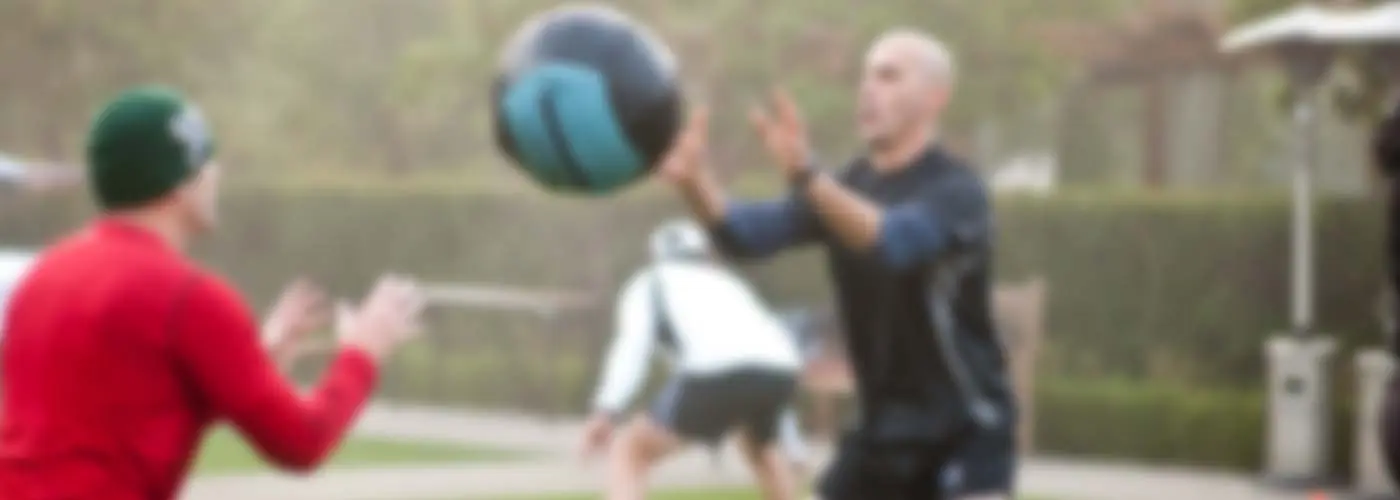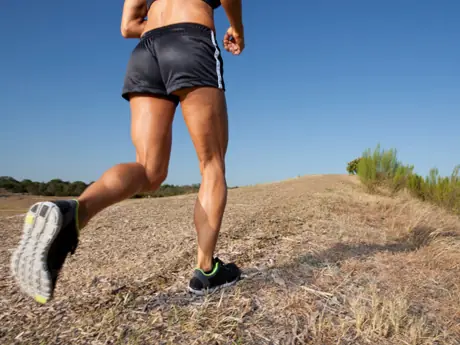Mini-band Walks
Most triathletes have very strong quadriceps and hamstrings but very weak hip stabilizers. The gluteus medius is a very important muscle for stabilizing the hip joint and controlling the femur. If you have weak hip stabilizers you will not be able to control the movement of the femur, which can cause hip, knee and low back pain.
Running and biking are unilateral movements. You are always using one leg or the other during these sports. If you cannot stabilize on one leg because of inadequate hip stabilizers you will get injured very fast. This exercise, done daily, will strengthen your gluteus medius and will assist in stabilizing your hip joint. The more stability you have in your hips the more we can swim, bike and run efficiently.
When performing this exercise, think of having a book on top of your head with great core stability. Do not wobble all over the place. Remain tight and balanced. Your toes should be pointed inward to get more recruitment of the gluteus medius. When going lateral, start off by doing 10 small steps to your left and 10 small steps to your right. Build to 30 small steps to your right and left. When linear, start off by doing 20 small steps forward and back and build to 30 small steps front and back.
Deep Squat to Hamstring Stretch
This is a powerful exercise. This will help loosen up your ankles, open up your hips, and stretch your hamstrings. Triathletes get very tight in their hips and hamstrings from constant biking and running. This exercise done every day will enhance ankle mobility, hamstring flexibility and hip mobility. Make sure to keep your chest up and back flat, keep heels on the floor and keep your elbows inside of your knees during the squat. As you go into the hamstring stretch, push your hips up and keep a straight back until your feel the stretch in your hamstrings. Start off by doing five full repetitions of this movement.
Lateral/Straight Leg Swings
This dynamic exercise is performed to increase hip mobility. This is a mandatory movement in your daily workout routine. If you lack mobility in your hips, your lower back will take the stress and will eventually start to hurt. These movements will open your hips in a frontal and sagittal plane of motion.
World renowned strength coach Michael Boyle said, "The problem is that the hip is built for mobility and the lumbar spine for stability. When the supposedly mobile joint becomes immobile, the stable joint is forced to move in compensation, becoming less stable and subsequently painful."
During lateral leg swings keep your back stable and let your hips do the movement. Cross the center line of your body and do not let your toes externally rotate out. Keep your toes facing the wall. With straight leg swings maintain a tall and stable trunk. Swing your leg up as high as you can go without bending your knee. Keep your toes flexed back.
Thoracic Rotation
This is another simple but effective exercise. Too many triathletes suffer from lower back pain. These issues are most likely caused from tight hips or an immobile thoracic spine. Our thoracic spine is the 12 vertebrae located in the middle of the spine. You need active mobility in this region. If you lack mobility in this area you are likely to move at the low spine and cause back pain. Also, because of lack of mobility in the thoracic spine you could spark serious neck and shoulder issues.
- 2
- of
- 3
About the Author
Justin Levine
Get ACTIVE on the Go


Couch to 5K®
The best way to get new runners off the couch and across the finish line of their first 5K.
Available for iOS | Android








Discuss This Article